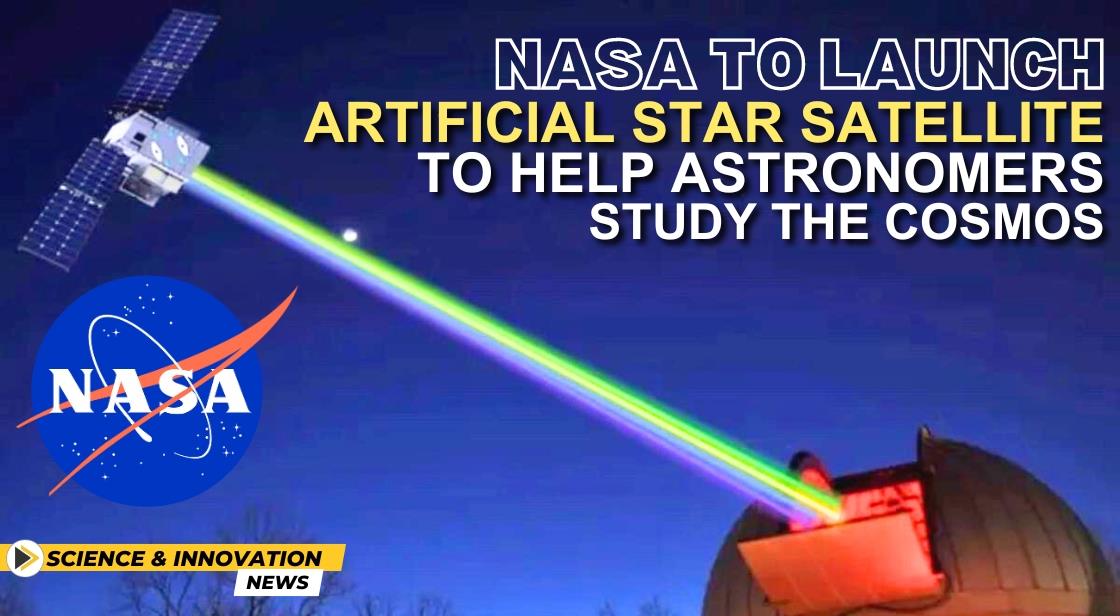NASA to Launch Artificial Star Satellite to Help Astronomers Study the Cosmos

News Synopsis
NASA is embarking on a groundbreaking mission called the Landolt Space Mission, scheduled for launch in early 2029. This innovative project aims to revolutionize astronomical observations by deploying a one-of-a-kind satellite – an artificial star.
Unveiling the Universe with Precision
The Landolt Mission's primary objective is to enhance the accuracy of ground-based telescopes. Traditional methods of calibrating telescopes rely on observing distant stars, which can introduce uncertainties due to variations in their brightness and other factors. The Landolt Mission offers a more controlled solution.
A Beacon of Light: The Artificial Star
The heart of the mission is a small satellite, roughly the size of a loaf of bread. This satellite will house a sophisticated laboratory equipped with eight powerful lasers. These lasers can be meticulously programmed to mimic the light emitted by various celestial objects, ranging from standard stars to the explosive brilliance of a supernova.
A Stable Platform for Observation
The satellite's placement is crucial for its effectiveness. It will be positioned in a geosynchronous orbit approximately 35,785 kilometers above Earth. This specific orbit allows the satellite to remain stationary relative to Earth's rotation, creating a stable and easily observable point of reference for astronomers.
Unveiling the Details: Enhanced Astronomical Observations
The artificial star's consistent and precisely controlled light will serve as a benchmark for astronomers. By comparing their observations of the artificial star with those of real celestial objects, they can fine-tune their instruments and eliminate potential calibration errors. This heightened level of precision will enable astronomers to gather more accurate data on stellar luminosity (brightness) and other critical astronomical parameters.
Landolt Space Mission: A Mission Honoring a Legacy
The Landolt Space Mission is named after Dr. Arlo Landolt, a prominent astronomer who played a pivotal role in developing standardized catalogs of stellar brightness. This mission serves as a tribute to his contributions to the field of astronomy.
A Cost-Effective Innovation
The Landolt Mission represents a significant leap forward in astronomical research with a relatively modest budget. The project is estimated to cost approximately $19.5 million (roughly Rs. 162.8 crore) and require a team of around 30 specialists.
Unveiling the Mysteries of the Cosmos
The Landolt Space Mission promises to be a game-changer for astronomy. By providing a reliable and meticulously controlled reference point, this artificial star will empower astronomers to delve deeper into the secrets of the cosmos, leading to groundbreaking discoveries about stars, galaxies, and the vast universe we inhabit.
Conclusion: A New Dawn for Astronomical Discovery
The Landolt Space Mission marks a significant milestone in the history of astronomical exploration. By harnessing the power of an artificial star, NASA is paving the way for a new era of unparalleled precision in observations of the cosmos. This innovative project holds immense potential for unlocking a wealth of new knowledge about stars, galaxies, and the fundamental nature of the universe.
Key takeaways from the Landolt Space Mission:
-
Enhanced Accuracy: The artificial star will provide a reliable and stable reference point, enabling astronomers to gather highly accurate data on celestial objects.
-
Unveiling Stellar Secrets: With improved data, scientists can gain deeper insights into stellar luminosity, evolution, and other crucial astrophysical phenomena.
-
A Legacy of Innovation: The mission honors Dr. Arlo Landolt's contributions to astronomy and paves the way for future advancements in telescope calibration techniques.
-
Cost-Effective Breakthrough: The Landolt Mission demonstrates how impactful scientific discoveries can be achieved with a relatively modest budget.
The launch of the Landolt Space Mission in 2029 is eagerly awaited by the scientific community. This ingenious project promises to revolutionize our understanding of the universe, igniting a new wave of curiosity and exploration among astronomers and space enthusiasts alike. As we peer deeper into the cosmos with this state-of-the-art technology, the veil shrouding the universe's mysteries may begin to lift, revealing a universe far richer and more captivating than we ever imagined.
You May Like









